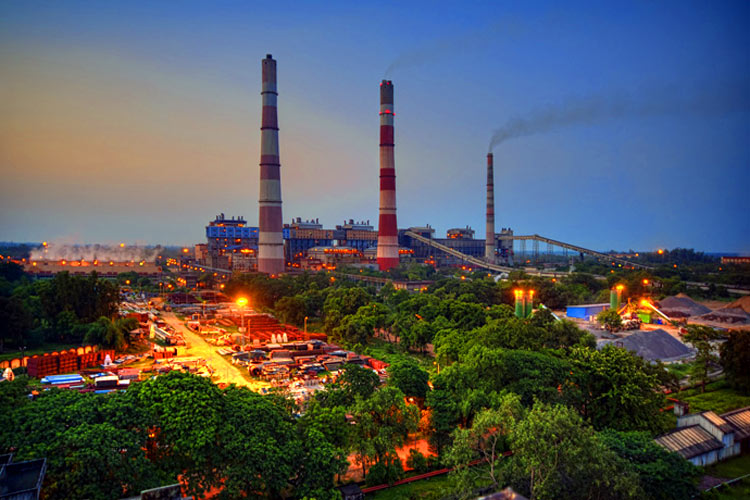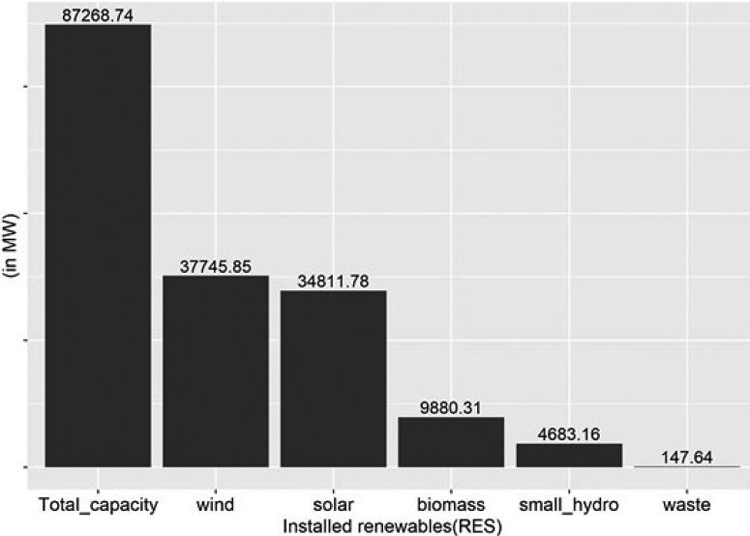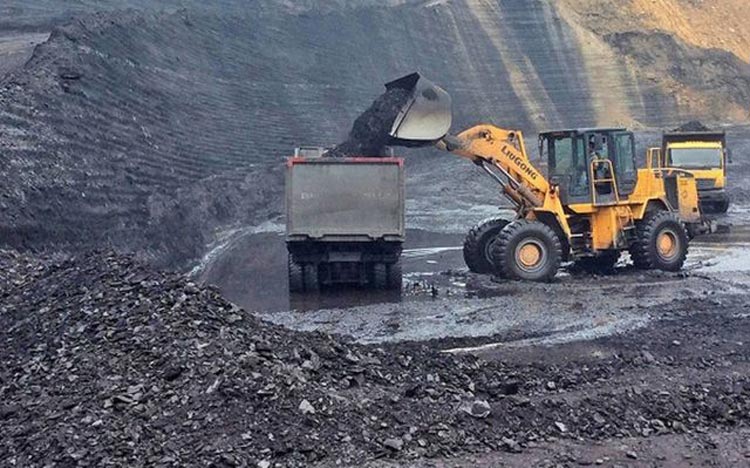
As the economy started bouncing back post COVID second wave, India is now gearing up for its festive season, but amid the festivals, the country is facing impediments of power shortage and outages in numerous states. A lot of thermal power plants such as National Thermal Power Corporation (NTPC) have proclaimed that they are in the middle of a huge coal shortage, but at the same time, these power plants are also held culpable for not stocking up coals as per increasing demand. Several states such as Rajasthan, UP, Maharashtra, Tamil Nadu and some eastern states of Bihar and Jharkhand have already warned their citizens for frequent power cuts and there is considerable panic anticipating these crises. The power analysts have clearly stated that states from Northern parts of India have undergone most of the power cuts and are speculated to face more outages because of insufficient coal supply in the thermal plants. There are about 135 power plants in India powered by coal that helps provide 70 % of the country’s electricity. Now, according to the POSCO’s survey that is featured in Reuters revealed that the power crisis discrepancy in the first week of October 2021 resulted in 11.2 % of India’s overall shortages all through the year. The data also highlighted that power supply in Rajasthan and Bihar was 17 % and 6 %, while the deficit with Jharkhand was 18-24 %. The point to be noted is that India has ample coal resources, but then why this challenge happened, is it really a crisis or just a matter of propaganda? More importantly, how the countries’ planners resolve the matter and evade the crisis. Before that we need to check the total installed power capacity of India.
Highlighted the reason behind the crisis, an official from NTPC plant in Madhya Pradesh who wishes to be unnamed told exclusively to CircuitDigest, “Coal crisis and insufficient stock is just hype in the media. The actual reason behind the outage and power cut is the unprecedented growth in demand for power after the second wave of COVID. Another reason is that the mining of coal is massively affected this year due to late monsoon, and most importantly, there is a tremendous escalation in the price of imported coal, which is also required by the thermal power plants to generate good quality electricity.”
Going below we will find out why the matter is not hype, the alternative solutions, recent recommendations by the authorities, and why the matter requires urgent attention.
How the power sector after 2015 fueled renewable generation
Due to the augmentation in the country’s demand for renewable generation the power sector is moving through a transformative alteration from the past few years. There are several barriers linked to the renewable generation like economic, social, and technological implications that require detailed attention. In order to meet India’s Intended Nationally Determined Contributions (INDCs), the country must perk-up the nutrition of its power sector and must be able to offer clean energy to all households. By the end of 2022, India wishes to target six-fold expansion of renewable energy generation to 100 gigawatts (GW) of solar energy capacity and 20 GW of wind energy capacity.

Source: Ministry of Power- Total Installed Capacity in the end of 2020
India, which is considered to be the world’s third largest consumers and producers of power, fails to provide electricity to over 200 million people. To change this scenario, India back in 2015 grabbed the 2030 agenda for Sustainable Development. By the end of 2030, it aimed to target 40 percent power generation via non fossil fuel sources. Currently, the country is now the globe’s third-largest electricity producer after China and the USA with a per capita energy consumption of 1117 kWh (in 2017). Coal power has the highest share (78%) among the total installed capacity in 2020. By the end of April 2020, it was revealed by the analysts that the share of renewable sources in the total energy mix was 23.56 percent.

Source: Ministry of Power- Total Installed Renewable in the end of 2020
The important policy and technological hurdle for the Indian power cluster is because of digitization, decarbonisation, and decentralization of the power system. After 2018, there is a ray of improvement as the overall installed electricity generation capacity exceeded 344 GW.
What Actually Happened and Why
Basically, the shortage happens every year with the onset of monsoon and then supply of coal becomes an issue because the mines are located in the interior and the logistics and roadways do not have proper infrastructure. This year, monsoons were extended and the power plants did not stock up resources, which they should have done before. Hence, when the demand increased there was insufficient generation of power as most of the demand was met by coal.
Anupam Chatterjee, Principal Correspondent at the Financial Express, who is also investigating the matter closely, told exclusively to CircuitDigest, "The monsoons were extended this year and that prevented Coal India from resuming supply. Though the impact was being felt in early October, technically it started much before when power plants did not stock up in spite of CIL having 100 millions stocks at their mines. The power plants did not have ample inventory at their end when power demand surged. Across the country, power plants were left with a little more than 7 million tons of coal at their end, which was only sufficient for four days. Ideally they should have stocked up for 15 days. Now with demand coming down and coal supply increasing, the situation has started stabilizing."
It is also speculated by many experts that the hike in prices of international coal also have an impact on India’s power crisis. The power authorities and officials from NTPC refuted the statement and mentioned that the global price escalation had a very little bearing in India. Gas prices have shot up globally, while Europe has seen a price increase of 400 percent. As per Reuters, since mid August of this year until October, there is an increase in the price of imported coal on India’s ports by 40 percent. India doesn’t have much capacity that runs on imported coal. India has 200GW of total thermal power capacity out of which 89GW runs on imported coal. Out of the 89GW, only 17GW purely runs on imported coal. Hence, India is now trying to phase out imported coal and soon the country will have zero imported coal policy. Now, if the demand, which is met by imported coal, is reduced there are no plants in the country to ramp up that. According to Coal India officials, NTPC stopped importing coal for a year now. The deficit which was created was to be met by domestic coal. Imported coal based plants are not operational in the country. For instance, there are three imported coal based power plants in Gujarat. The problem with these plants is that they are eager to run but no one buys from them and for ten years they are in a legal tussle at what price they should be selling power.

Coal Mining- Source: mines, minerals & PEOPLE
Other than that several states of India such as UP, Maharashtra, Tamil Nadu, and Rajasthan are repeated offenders of not paying their dues to the relating companies, Coal India and to the power plants. Uttar Pradesh has been repeatedly delaying payments for many months as per sources, which is also creating a gap in the power supply of the state. Now, when demand increases you do not have enough coal stock. Shrikant Sharma, Power Minister of Uttar Pradesh stated that they are purchasing power at Rs 17 per unit and hence, requested people not to use electrical appliances unnecessarily. But, the point to be noted is that since October last year, Coal India has been repeatedly asking a lot of power plants to maintain stock, but they did not. As per the power plants, the states mentioned above are either delaying or not paying their dues and so, how will the plants maintain stocks? Another interesting aspect is that Uttar Pradesh which is a repeated defaulter, how can it purchase power at Rs 17 per unit? Had the payments been done on time there would not have been a short and gap in power supply.
To ward off the defaulting situation a few days back the Union Ministry has urged all the power firms that are backed by the government to go for a “zero tolerance policy”. If the pending payments are not done soon, then NTPC will cut power supplies for several parts of Madhya Pradesh and Uttar Pradesh. Both the states could lose 2,793MW and 2,430MW of power supply from various power plants of NTPC. After a detailed meeting among the officials during the first week of this month, the central ministry of power has forwarded directives to the central government owned power firms on October 21 stating, “in case of delay in payment from states beyond due dates, regulation of power shall be started for at least 50 % of the power supply and gradually increase the quantum of regulation.”
Another challenge for the coal crisis, which many officials are pointing out, is protests are going on by various activist organizations in India to stop or control mining with the slogan ‘No More Coal’ to vouch for renewable energy, avert pollution, and prevent environmental imbalance. The private players and coal authorities stated that they are having difficulties to mine ample coal and generate power.
Retaliating to the statement above on coal protests, Dr. Sreedhar Ramamurthi who is an earth scientist and a senior energy researcher told CircuitDigest, “This is the narrative that the mainstream has been portraying for long. The government has all the power and is exercising its powers in various ways. Further as I mentioned already the licensed capacity to mine is twice the demand. It is therefore the failure of the public and private sector which they are hiding behind. There is a myth that corporations particularly the private sector are efficient they have to be exposed. The Non Performing Assets (NPAs) in the power sector is an example and it is very well known that we have over 40,000 MW of stranded power assets. So poor financial, inventory and mine management are the real cause of the problem. Environment and Forests have no voice and are clearly visible in the air around us and the water that is contaminated in almost all river systems.”
The Truth behind Harnessing Power from Renewable
While speaking of harnessing power from renewable sources, it is very difficult for India at this moment because the process of power generation from hydro is highly expensive. Another instance is India has around 25GW of gas-based power generation capacity, but 80 percent of it is unutilized because fuel price is also extremely expensive. Even after raising productions from renewable to 18 % is not enough in terms of volume to meet the power demand, while coal’s production increased by 19 % this year and the capacity currently stands at 208GW. Hydro depends a lot on water supply and rising water levels. It was down in production by 4 % back in September as per an official from NTPC. There are lots of under construction hydro plants waiting for environmental clearances. Also, it is needed to add the balancing cost and also ideally the storage cost, which makes it much higher than coal and India has abundant resources within the country and if we are talking about energy independence then we cannot move away from coal.

Hydro Power- Source: RSRR Project
On the other hand, there are very few gas power plants that run in the country get the fuel from the allocation of the domestic APM (administered price mechanism). So, there was a 25 percent dip in gas production from April until September. Last year, a few gas power plants were able to operate at a decent Plant Load Factor (PLF) because gas prices internationally had come down. The gas plants, which are based in Gujarat, have access to cheap natural gas and the ones that are lying on the eastern coast are very far from the western port terminals. Hence, the price of logistics and transportation becomes very high and it doesn't make sense to generate power.
The Alternative Solution and the Action Plan
In order to avoid the same crisis in the future, some alternative solutions must be considered and some action plans are also required. At first, the Center-state relationships must be improved in this matter and we need to start monitoring the power plants more because there are no penalty charges associated with maintaining stocks on time. India has an ambitious plan to reach 450GW of renewable energy by the end of 2030 out of which only 100GWh have been achieved. Speaking about the action plan, there was a 15 % rise in power capacity during the third quarter of this year, but the generation was not enough. It confused the planners and the demand projections and storage costs are very high and so, we cannot say the lowest cost of renewable energy will be Rs 1.99 per unit.
Coal mines that are flooded due to the monsoon have the possibility to boost hydro-power generation. This is because apart from coal, India’s major electricity source is the gigantic hydroelectric projects on the dams and it performs mainly during the rainy season from June until October. If these plants can operate on higher utilization rates the share of power generation from this source can escalate to 18 % from the current 14 percent. There should be more investment in gas and clean fuel.
So, a report from Council on Energy Environment and Water (CEEW) says that if we have to meet the net-zero target by 2050, we need more than 5000GW of solar plants. Now, 1MW of solar needs 4 acres of land and that is also the challenge of how much land can be acquired. We are sitting on 300 billion tons of coal reserves.
According to Dr. Ramamurthi some more harsh action plans are required, which are listed below:
- The big 40-50 coal mines produce nearly 70 percent of the coal in the country though we have more than 400 coal mines. We need to rationalize our coal production so that there are fewer mines, which can be managed and monitored better.
- We have to ensure that those industries which have their captive mines should have proper mine plans which reflect their demand and not depend on Coal India.
- We have to have a close look at how we are importing coal and need to have a plan to systematically ensure that we are becoming self-reliant.
- We also need to understand that coal is not going to be a stable fuel for the future. Pollution, climate change, and already cheaper costs of renewables are going to shift our source of energy. We need to do it intelligently without adversely affecting those dependent on coal-based energy systems and communities from where we will be getting the materials for other energy systems.





